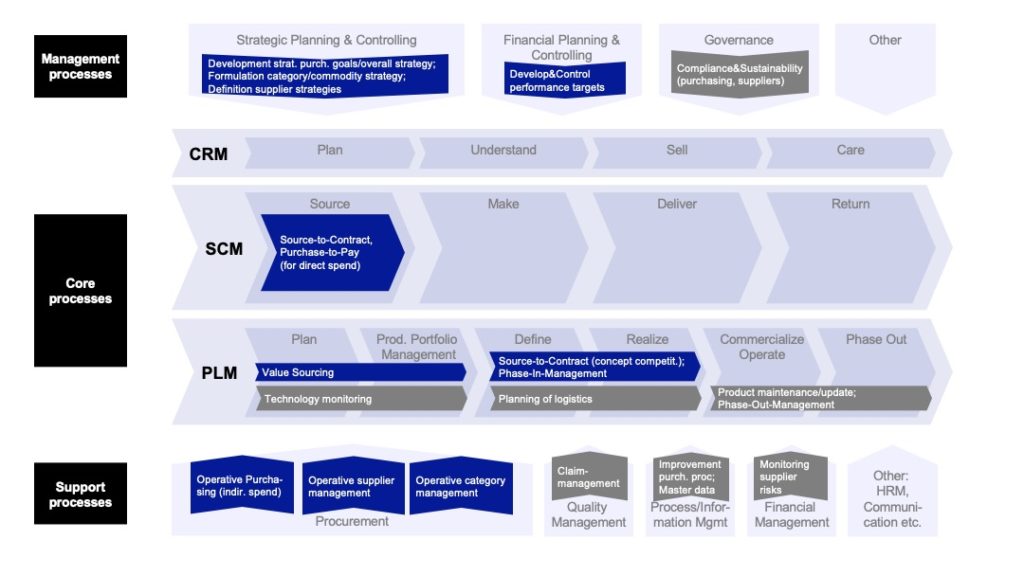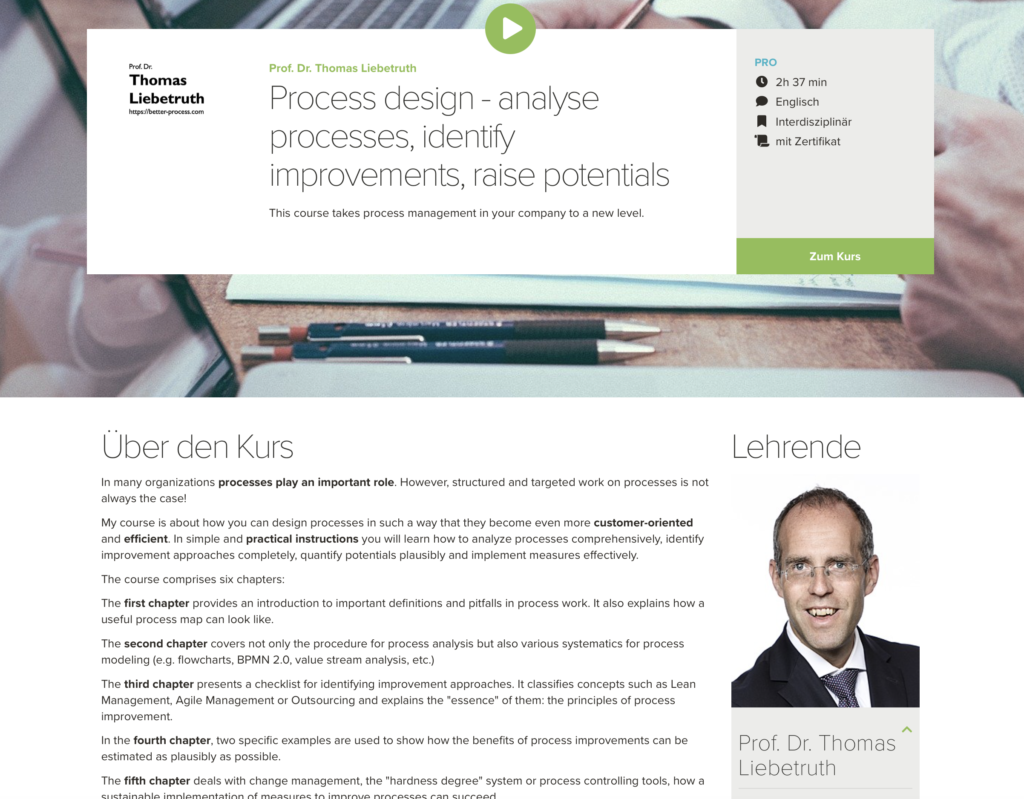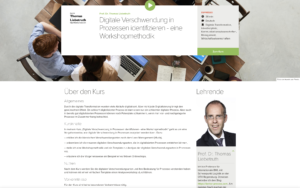Purchasing processes, like logistics processes, are located at the interfaces between different corporate functions. Thus, purchasing processes are highly dispersed and often cross-functional. In this respect, it is difficult for purchasing managers to maintain an overview of all purchasing-related activities. This becomes even more difficult with increasing responsibility, scope and complexity of the tasks.
Therefore, it is important for the purchasing manager to identify relevant processes and its interfaces with other processes. Only then the purchasing manager can developing the most important ones. In this way those purchasing processes can be designed to add the most value to the organisation. Together with my colleague Gerhard Hess, I developed a structured process framework for mapping purchasing processes.
Challenges of managing purchasing processes
There are some challenges in mapping processes. Most of them are due to the complexity and cross-functional character of purchasing. Those challenges include:
- The range of tasks is sometimes very diverse. From the operational procurement of non-production materials to the formulation of a commodity group strategy to involvement in the product development process, many challenges must be overcome and various competencies must be maintained.
- Purchasing has different roles I. On the one hand, it is a supporter and business partner, but on the other hand, it also has monitoring functions (e.g., avoiding maverick buying or monitoring compliance requirements).
- Purchasing has different roles II. It can be a process-owner (e. g. for buying materials) or could have only an advisory role (e. g. technology monitoring in product development)
- The time structure of the tasks can range from day-to-day business (operative procurement of production material) to project-driven (value analysis of important A-materials).
- There are many trade-offs to manage: is it better to have a low parts price or a smooth logistics process? Or is it better to raise the potential of synergies between business units or allow decentralised purchasing?
Furthermore, the size of the company and the complexity of the business (e.g. international subsidiaries or different business units) can have an influence on the process structure.
A model for mapping purchasing processes
In general process models can be mapped in many different ways. From a strategic view, Porter’s value chain helps to identify competitive advantages. From an operative view operational process models are the basis for an implementation of IT tools. Here, the goal is to provide an overview of all purchasing processes and how they relate to other business processes. For this purpose an instrument in business process management is the process map. A process map can be derived in various ways, that can be found here.
Another aspect especially for mapping purchasing processes is the perspective from which the process model is developed. It can be developed from the perspective of purchasing or from the perspective of the company. The first option focuses only n purchasing processes and neglects the integration with other processes.
Therefore, we decided to create a classic process map of a manufacturing company. This process map is structured in management-, core- and support-processes. The core processes can further be divided into the CRM (customer relationship management), the PLM (product lifecycle management) and the SCM (supply chain management) process. Then we added the most important purchasing processes. The following figure shows how the purchasing processes can be mapped using this structure.

The figure shows also the distinction of the role of purchasing. The blue processes indicate that purchasing acts as process owner. In the grey ones it takes on a supporting role. In the figure one can see that purchasing focuses on the operational procurement in the core and support processes. Also, various aspects of the development and implementation of the purchasing strategy in the management and support processes are important. In addition, purchasing is also in the lead for supplier-related processes as part of the development process. For these processes, purchasing is in the role of a process owner.
Management processes
The activities of strategic purchasing can be classified into the management processes strategic planning/controlling and financial planning and controlling. The following processes in particular fall under strategic planning/controlling:
- Development and controlling of strategic purchasing goals and overall purchasing strategy. Strategic purchasing goals are value contribution of purchasing (e.g. x million EUR in the form of savings, avoided price increases, etc.). The overall purchasing strategy include the strategic analysis of the supply environment (e.g. how will important raw material prices develop, which technologies will be available in the coming years?) as well as the formulation of strategic guidelines (e.g. we want to become A-customers for our suppliers).
- Formulation of category or commodity group strategies. This process involves putting together the appropriate mix of purchasing instruments (e.g. demand management, single vs. multiple sourcing, strategic partnership vs. spot market) for each commodity group based on an analysis of importance and procurement risk. A spend analysis is often a prerequisite for this.
- Definition of supplier strategies. The main contents of this process are supplier evaluation, qualification and approval as well as the development of specific strategies for individual suppliers on the basis of a supplier classification (e.g. supplier development for B-suppliers).
In addition, purchasing is responsible for developing and controlling performance targets in purchasing as part of Financial Plannnig and Controlling. This involves planning and monitoring purchasing budgets.
Core processes
Within the scope of the core processes, Purchasing is in the responsible mainly for the sourcing of direct materials (used for end products) in the SCM-process. Is also has an important role the PLM-process.
Supply Chain Management
The scope of Supply Chain Management involves according to the SCOR model the sub-processes Plan, Source, Make, Deliver and Return. Purchasing is obviously responsible for the Source-process.
A distinction can be made between the Source-to-Contract and Purchase-to-Pay processes. The Purchase-to-Pay process is more concerned with very operational tasks like order processing and payment on the basis of existing (frame) contracts. The aim of the Source-to-Contract process is to create a solid contractual basis with one or more suppliers. To achieve this, requirements must be analyzed and forecast, the tender process and any negotiations must be carried out, and the contract must be monitored.
These two processes can be differentiated into process variants based on two criteria: The first case is a frame-contract from which call-offs are made. The second variant is the procurement without frame contract. Here, for every order a singular contract must be agreed upon. In addition – analogous to the SCOR model – the two processes have to be organized differently, if it concerns Make-to-Stock, Make-to-Order or Engineer-to-Order materials. Make-to-Stock materials are usually more standardized, and a success factor is good demand forecasting. The variant for Engineer-to-Order materials has to focus on a good specification and a fast fulfillment process.
Product Lifecycle Management
Within the Product Lifecycle Management or product development process, Purchasing is in the lead when it comes to the early involvement of suppliers in the new product development process (value sourcing). In some industries, the value-added share of supplier materials accounts for more than 80%. This is why it is worthwhile not only to use suppliers to source existing materials, but also to use the innovative power of selected suppliers as an impetus for product development.
In addition, purchasing is involved in the following activities in later phases of the product development process:
- Source-to-contract (concept competitions). In development projects for new products, it can make sense to involve suppliers in the form of concept competitions. The task of purchasing is to design the specifications so that as many suppliers as possible with innovative solutions can participate.
- Phase-in management. Once suitable suppliers have been selected, a subsequent task is to plan the time sequence up to the SOP (start of production) and to accompany the supplier. Challenges are uncertainties with the new material and possibly new manufacturing processes.
Support processes
Other purchasing activities are found in the supporting processes. The specifications for supporting processes are derived from the requirements of the core or management processes. The most important processes for purchasing are the procurement of indirect materials, operational supplier management and the implementation of the material group strategy.
Purchasing Indirect Materials
Analogous to direct materials, a distinction can also be made between the source-to-contract and purchase-to-pay processes in the purchasing of indirect or non-production materials. Another task – particularly for standardized or routine products such as office supplies – is to specify the catalog offered to internal departments. In this catalogue management-process, it is important to keep the product range offered as appropriate to requirements as possible, but also standardized as possible in order to achieve bundling effects.
Additional requirements exist for the procurement of capital goods such as machinery and equipment or for outsourcing projects such as the outsourcing of logistics. Here, the process from the creation of the specification to the supplier search and selection to the implementation is managed as a project. The internal customers can be in all parts of the company.
Operational Supplier Management
The tasks of operational supplier management consist in collecting data for supplier evaluation (e.g., from logistics), supplier qualification and approval, and implementing supplier development measures (e.g., communicating the results of supplier evaluation or annual meetings).
Operational Category Management
Similar to the implementation of the supplier strategy, the operational implementation of the category or commodity group strategy can also be classified as a support process. For example, bundling measures that were defined in the material group strategy must be discussed and implemented with the business units concerned. In addition, the data for the spend analysis must be gathered and monitored on a regular basis.
Involvement of purchasing in other processes
Purchasing often contributes its expertise to other processes or projects. The figure shows these processes as gray arrows.
Management Processes
An important task in the context of governance as a management process is collaboration in the formulation of guidelines for comliance and sustainability in purchasing and with suppliers. This includes the purchasing-specific part of the internal control system for purchasing. For example approvals through dual control for purchase orders or rules for the organization of tenders. Purchasing must also contribute to develop a sustainability strategy for the supplier network. Suppliers are on the one hand stakeholders for the company. But on the other hand, the sustainability strategy must also be implemented or enforced for the suppliers.
Core Processes
As part of the product development process, purchasing is often involved in those projects. The tasks concerned are, for example:
- Technology monitoring as part of supply market research
- Planning logistics concepts for the new materials, including cost analyses
- Initiation or implementation of measures within the scope of product maintenance (e.g. standardization of components or testing of alternative materials)
- Phase-out-Management of delisted suppliers
Support Processes
Finally, purchasing ist also involved in other support processes. Exemplary tasks here are:
- Improvement of procurement processes (e. g. by digitization) and master data management for material and supplier-related data in the information management process.
- Monitoring of supplier-related risks as part of the financial/risk management process.
- Management of complaints as part of the quality management process. In order to be able to legally enforce any claims, support from the legal department is often necessary here.
Outlook and limits
We were aware that it is not possible to develop a framework for all kinds of companies and industries. But our framework aims to give an overview of important purchasing processes and their most important sub-processes. Companies are free to adapt it to their need by adding company-specific processes or omitting not relevant ones.
Online-course on the basics of process management
My online-course is about how you can design processes in such a way that they become even more customer-oriented and efficient. In simple and practical instructions you will learn how to analyze processes comprehensively, identify improvement approaches completely, quantify potentials plausibly and implement measures effectively.



One response
[…] Prozessmanagement. Wie man eine Prozesslandkarte erstellt, erklärt dieser Beitrag. Ein Beispiel, wie eine Prozesslandkarte für die Identifikation von Prozessen im Einkauf genutzt werden kann, ist …. Das folgende Bild zeigt beispielhaft eine Prozesslandkarte einer […]